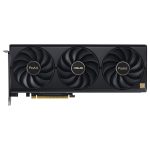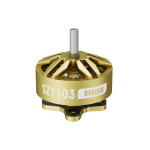Gaming has evolved into a multi-faceted form of entertainment, demanding more from computer hardware than ever before. A powerful graphics card is crucial for delivering smooth and immersive gaming experiences. Whether you’re struggling with frame rates, encountering visual artifacts, or simply looking to enhance your gaming setup, upgrade graphics card can be a game-changer. This guide provides essential tips on selecting, installing, and optimizing a new graphics card to ensure you enjoy the best gaming experience possible.
Recognizing the Signs for an Upgrade
Frame Rate Issues
One of the first signs that you may need a graphics card upgrade is consistently low frame rates. Frame rates below 60 frames per second (FPS) can result in choppy gameplay, affecting overall enjoyment and responsiveness in games. You might notice this issue more acutely in demanding action titles or when you adjust graphics settings to higher levels, such as increasing resolution or enabling advanced graphical effects. Continuous low frame rates can lead to frustration, especially in fast-paced games where split-second timing can make the difference between winning and losing. If you’re frequently dropping below your monitor’s refresh rate, it’s time to consider an upgrade before the gaming experience becomes an exercise in patience rather than enjoyment.
Visual Artifacts and Lag
Experiencing visual artifacts, such as strange lines, flickering images, or screen tearing, can indicate a failing graphics card. Lag, stuttering, and tearing can ruin immersion in a game. If you notice these issues along with symptoms like overheating or strange noises from your GPU, it’s a clear sign that your current graphics card may be past its prime and needs updating. Additionally, graphical glitches can detract from the meticulous artwork and design of modern games, making it difficult to appreciate the visuals. Observing these issues consistently signals it’s crucial to replace your GPU to restore smooth gameplay and enjoy the beautiful graphics developers work hard to create.
Choosing the Right Graphics Card
Compatibility Check
Before you invest in a new graphics card, check for compatibility with your existing setup. This involves reviewing your motherboard’s specifications to ensure it supports the new card. Look for the PCIe x16 slot, which is standard for modern GPUs. Furthermore, ensure that your CPU can keep up with the new card; a powerful graphics card paired with an underwhelming processor could lead to bottlenecks, reducing performance overall. Verify that your power supply has enough wattage to support the new card, as high-end models often require more power — sometimes exceeding 700 watts. Lastly, consider the physical dimensions of the card; you must measure your PC case to ensure the new GPU fits comfortably without obstructing airflow or other components.
Performance Needs
Determine your gaming performance requirements to choose the right upgrade graphics card. If you play less demanding games at lower settings, you may not need the latest high-end GPU. Conversely, if you play resource-intensive titles or want to experience VR gaming, investing in a more powerful card will pay off in the long run. Research benchmarks for various models based on the games you play to see how they perform under similar conditions. It’s essential to compare the cards not just on their specifications but also on real-world performance to understand what kind of frame rates and visual fidelity you can expect. This research will help ensure that you make an informed decision that aligns with your gaming habits and aspirations.
Budgeting for Your Upgrade
Setting a Realistic Budget
Graphics card prices can vary significantly, especially with new releases impacting market dynamics. Set a budget that covers not only the card itself but also accounts for potential additional costs, such as a new power supply or cooling solutions. It’s smart to budget a little extra for unforeseen expenses. Research different models within your price range thoroughly, looking for sales events during holidays or promotions that retailers offer. Additionally, don’t overlook the option of purchasing refurbished or previous-generation models that can provide excellent performance at a fraction of the cost. Your budget should reflect your gaming priorities while keeping future-proofing in mind—allowing you to adapt to new games and technologies as they emerge.
Understanding Total Cost of Ownership
Consider the total cost of ownership when upgrade graphics card. This approach includes not only the initial purchase price but also any additional hardware upgrades required, such as a new power supply unit if your current one is inadequate. Over time, you should factor in energy consumption, especially if the new card demands more power. Additionally, think about the longevity of the card—investing in a slightly more expensive model with better longevity could save you money in the long term by delaying the need for another upgrade. Understanding your total cost helps you determine whether the investment aligns with your gaming goals and financial situation.
Installation Process
Preparing for Installation
Before you begin the installation process, gather the necessary tools: a screwdriver, anti-static wrist strap, and a clean workspace. Make sure your computer is powered off and unplugged to avoid any electrical hazards. Ground yourself to prevent static damage to sensitive components. This part of the process is essential in ensuring you don’t accidentally harm either yourself or your hardware. Remove the side panel of your case carefully to allow access to your internal components. Organizing your workspace can streamline the installation process, reducing the risk of losing screws or other small components.
Step-by-Step Installation Guide
- Remove the Old Card: After accessing your motherboard, locate your existing upgrade graphics card, release the locking mechanism, and carefully pull it out of the PCIe slot. It’s crucial to do this gently to avoid damaging the motherboard or other components.
- Insert the New Card: Align the new graphics card with the PCIe x16 slot and gently press down until it securely clicks into place. Ensure your card is fitted properly; a loose connection may result in performance issues.
- Connect Power Cables: Attach any required power connectors from your power supply to the new card, ensuring all connections are snug. This step may vary based on the card’s specific power requirements, so consult the paperwork included with your card for details.
- Close Up the Case: Once you’re confident everything is securely connected, replace the side panel of your case and plug your computer back in. Checking to ensure that all cables are tidy will also help with airflow and aesthetics.
Driver Installation
After installing the new graphics card, the first step is to power on your computer. Most operating systems will automatically detect the new hardware. Download and install the latest drivers from the manufacturer’s website (NVIDIA or AMD). These drivers optimize performance and fix any bugs. Keep an eye out for any software utilities that come with the drivers, as they can offer additional tuning options for your card. This is a critical step that significantly affects how well your new GPU performs, so allocating time to ensure everything is properly configured is essential for optimal usage.
Optimizing Graphics Settings
Choosing the Right Configuration
After upgrading your graphics card and installing drivers, it’s essential to optimize your graphics settings for the best performance. Open your game and access its graphics settings menu. Start with presets that match your new GPU’s capabilities, allowing you to balance quality and performance. Many modern games have a recommended settings feature that automatically chooses the best graphics options based on your system’s hardware. Additionally, take time to adjust individual settings, such as shadow quality, anti-aliasing, and texture detail, to find the best balance that enhances both visual fidelity and frame rates without overtaxing your card.
Utilizing Performance Monitoring Tools
Use monitoring tools to keep track of your card’s performance during gameplay. Applications like MSI Afterburner, GPU-Z, and Fraps can show you real-time statistics on frame rates, GPU temperatures, and utilization during gameplay. Monitoring your GPU’s temperature is especially crucial, as overheating can degrade performance and longevity. If temperatures rise too high, consider tweaking fan speeds or upgrading your cooling system to ensure the longevity of your hardware and stable performance. This proactive approach to optimization can prevent potential setbacks and enhance your overall gaming experience.
Maintaining Your Graphics Card
Regular Dusting and Cleaning
To keep your graphics card performing optimally, dust and dirt removal is crucial. Over time, dust can accumulate and obstruct airflow, causing overheating. Schedule regular cleanings every few months to vacuum out dust from your case and GPU. Make sure to turn off and unplug your computer before starting this process. Carefully open up the card and use compressed air to clean out any dust from the fans and heatsinks. Ensure the fans can spin freely, as this is vital for cooling efficiency. Keeping your system clean is essential for optimal performance and extending the life cycle of your components.
Monitoring Performance Over Time
Stay vigilant about your graphics card’s performance over time. Watch for any dips in performance or unusual noises, as these can indicate potential problems. Tools like HWMonitor keep track of temperature fluctuations and usage stats to help you analyze your card’s health. Regularly updating your drivers also plays a crucial role in maintaining performance, as manufacturers release updates to optimize how games utilize your GPU. If performance begins to degrade significantly, it might be time to consider another upgrade or engage in troubleshooting to identify the root cause of the problem.
Enhance Your Gaming Experience
Upgrading your graphics card is one of the most impactful changes you can make to your gaming setup. Doing so not only enhances visual quality and performance but also allows you to enjoy the latest gaming titles without frustration. Following the essential tips in this guide sets you on the path to selecting, installing, and maintaining your new graphics card successfully. It’s important to understand that this upgrade can significantly change your gaming experience, not merely in frame rates but also in terms of how much you enjoy the visual storytelling many modern games offer.
Be sure to monitor your system closely after the upgrade graphics card to ensure everything runs smoothly and optimize settings as necessary. When you invest time and effort into maintaining your hardware and keeping it up to date, you’ll foster an enjoyable gaming environment that provides immersive experiences for years to come. Whether you’re raiding dungeons, exploring vast open worlds, or engaging in competitive play, a new graphics card can transform how you experience your favorite games. Embrace the challenge and take the plunge; upgrade your graphics card today and elevate your gaming adventures to new heights!

